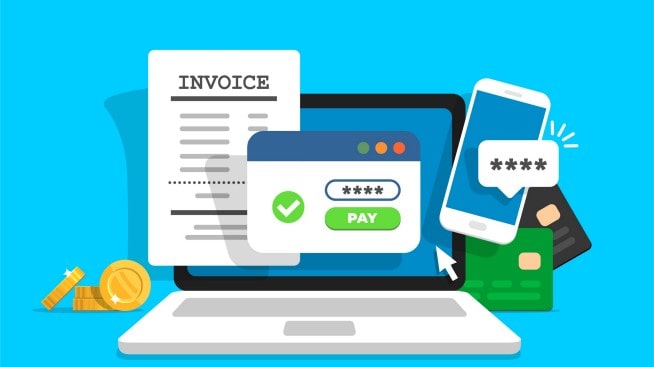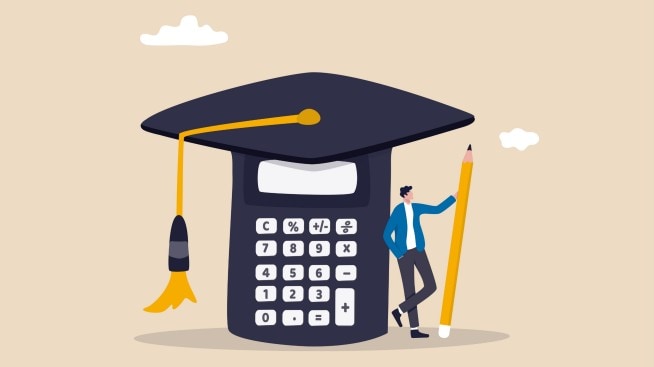Understanding good debt vs. bad debt

Quick insights
- Good debt can be seen as an opportunity and can potentially be used to grow your net worth or income.
- Bad debt doesn’t generate a monetary return and usually has a high interest rate.
- Managing your debts can be an important part of creating a healthy financial foundation.
The word “debt” often has negative connotations, but not all debt is bad. Some forms of debt are considered good and can be seen as an opportunity for growth. Let’s explore the different types of debt and how to continue to build a positive credit history below.
Differences between good and bad debt
Good debt means you're borrowing money in a way that may help you grow personally and/or financially, as well as possibly create a source of income over time. When managed wisely, good debt can be a net positive for your finances and may even lead to opportunities like obtaining an education or a house or starting a business. Examples of good debt include mortgages, student loans and business loans.
Bad debt, on the other hand, is when you borrow money for purchases that do not increase in value over time or provide a source of income. Examples of bad debt include extensive credit card debt and personal loans with high interest rates. Bad debt can negatively impact your credit score and potentially make it more difficult to access future lines of credit.
Of course, it’s important to note that any good debt can turn sour if you don’t make your payments on time. This behavior could hurt your credit score and you may face additional consequences, such as defaults and late fees, which may further hurt your credit. Good debt should still be managed wisely in order for it to be a good investment.
Types of debt
Let’s break down some types of debt in detail below:
- Mortgages. A mortgage is a loan that helps you purchase a house. Benefits include the potential to build home equity (value in an asset) and your home can appreciate in value, meaning it could be worth more in the future compared to when you originally purchased it. Note that this may not be applicable to everyone.
- Student loans. Some people think of student loans as an investment in their future and career. Down the line, you may be able to acquire a higher paying job with the appropriate degree.
- Business loans. These loans can help you jumpstart your entrepreneurship or grow your current business and can help pay for important business expenses.
- Credit card debt. Credit cards can offer many benefits, but if you don’t make your payments on time, you could put yourself in a position where you’re in a cycle of debt that’s hard to get out of. Credit card debt can accumulate very quickly when you overspend or only make the minimum payment.
- Payday loans. These quick, short-term loans may seem like an option during desperate times, but they usually come with expensive fees and high APRs.
5 ways to get out of debt
Whether you have good or bad debt, it’s important to maintain healthy financial habits such as making payments on time and not overspending. Below are a few ways to help you get yourself out of debt.
1. Create a budget and stick to it
Creating a realistic budget can be essential for maintaining your finances. Take a look at your monthly expenses and identify areas where you can cut costs. For example, you may want to freeze subscription services for a few months so that you can put that monthly savings towards your debts instead.
2. Prioritize debt repayment
If you have a lot of debt to pay off, it can be overwhelming to decide how to prioritize repayments. There are a few approaches you can take to help you tackle these debts. These include the debt snowball method, which has you pay off your smallest debt balance first and then roll payments over to the next-highest debt, which can help create momentum and confidence in your debt payoff journey. Or consider the debt avalanche method that suggests starting with debts with the highest interest rate, which can save you more money in the long term.
3. Negotiate with creditors
If you have a positive relationship with your issuer, you may be able to talk with a representative about adjusting your current situation, such as lowering interest rates or developing a payment plan. Note, however, if you have many outstanding balances or missed payments, it may be more difficult.
4. Consider debt consolidation
Debt consolidation involves strategies to help offset some of the expense of the debts (such as balance transfers). For example, you could plan to consolidate your debts into a single loan with a lower APR. By finding a card that comes with a lower APR, you could do a balance transfer and lower interest costs to help make the process of repayment simpler than managing several different repayments.
5. Seek professional help
No matter where you are on your financial journey, it’s never wrong to ask for guidance. You may want to seek a financial advisor to aid you with the process. Make sure you are working with licensed professionals.
Importance of credit score and credit history
Whether you have good or bad debt, learning to manage your credit wisely can help you improve your current financial circumstance. Your credit score and credit history are important pieces of this. To help you continue establishing a positive credit score and credit history, consider the following:
- Review your credit report to ensure the information is accurate, and report any mistakes to the credit bureaus
- Make your payments on time and, when possible, in full.
- Lower your credit utilization ratio to about 30% or below.
- Avoid applying for several lines of credit all at once.
- Always review the terms and conditions prior to applying for future lines of credit.
Bottom line
Good debt can help elevate your financial health over time by providing a return, whether that's a mortgage, education, etc. Bad debt is where you take out a loan for something that doesn’t have the potential to return in monetary value, such as a vacation, or is associated with a lending product with a high APR. This does not necessarily mean you are bad at credit—rather, learning to manage different types of debt and developing a strategy for paying them off can help you be more attuned to your spending habits and credit behavior.



